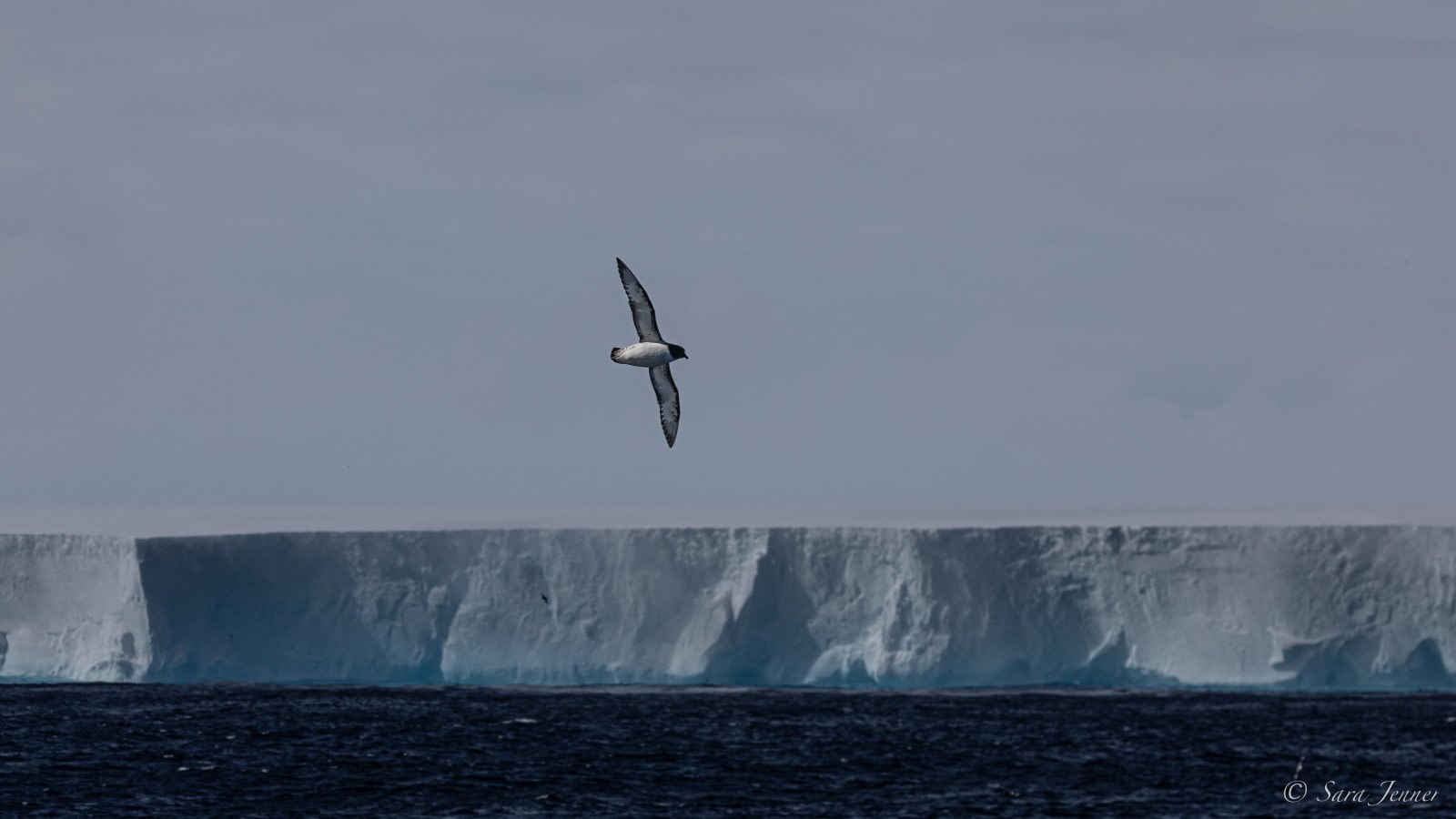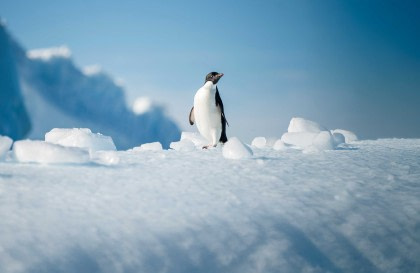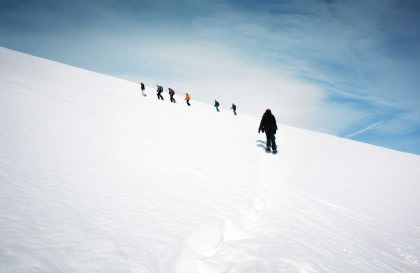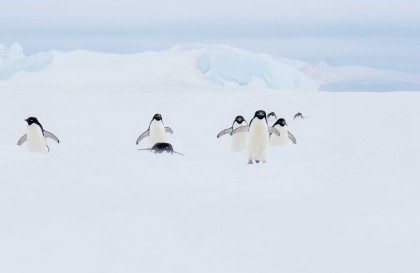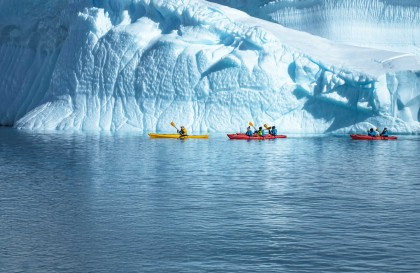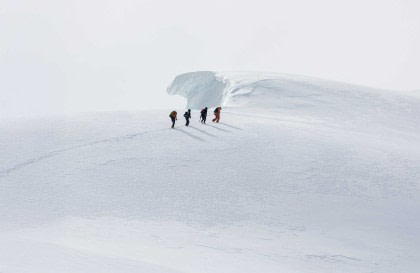Icebergs have become an iconic image associated with the freezing wilds of Antarctica and the Arctic, even drifting into shipping lanes to leave their mark on history. Many icebergs have achieved fame and notoriety for their sheer size or impact on shipping, such as the iceberg associated with the sinking of the RMS Titanic in 1912.
In Antarctica's icy wilderness, another colossal iceberg has captured global attention: Iceberg A23a. At nearly 4,000 square kilometers, this tabular, floating mass of ancient, compact ice is larger than some countries — and its journey has spanned decades. On an expedition to Antarctica, you might see this frozen behemoth - impossible to miss if your paths align!
How old is iceberg A23a?
The ice that forms A23a is far older than the iceberg itself, having emerged from the glaciers that feed the ice shelves of Antarctica over thousands of years. Iceberg A23a appeared in 1986 when it broke off from the Filchner-Ronne Ice Shelf. At the time, it was one of several massive icebergs calved naturally as part of Antarctica's long-term glacial cycle. But unlike most bergs, which eventually melt or disintegrate, A23a became grounded on the seafloor of the Weddell Sea due to its immense size and weight, becoming a frozen fixture for nearly four decades.
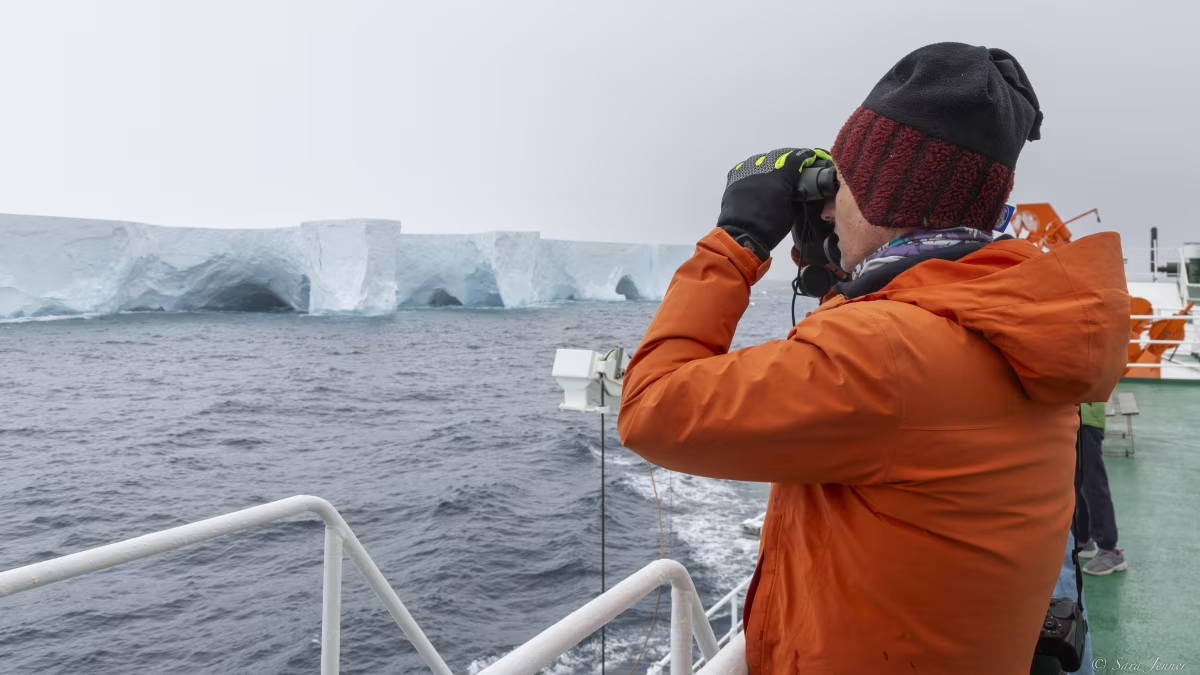
Picture by Sara Jenner
Where is iceberg A23a now?
In late 2023, satellite data showed something remarkable: iceberg A23a had lifted from the seabed and begun to drift, likely due to years of battering by other icebergs, the pressures of sea ice, and the slow reduction to its base by warming water. Carried by wind and current, A23a entered the Antarctic Circumpolar Current, the powerful ocean flow that circles the continent. Now adrift in open waters, iceberg A23a has moved slowly toward the South Atlantic, leaving the Weddell Sea and the Antarctic Peninsula behind.
This immense, city-sized piece of ancient ice is on a course for South Georgia, a haven for wildlife that thrives in the nutrient-rich seas. As of March 2025, iceberg A23a had once again become grounded on the seafloor around 73km (45 miles) from the shores of South Georgia.
In August 2025, scientists from the British Antarctic Survey reported that iceberg A23a had begun to disintegrate, itself calving huge icebergs that are being carried north west into iceberg alley. The crown that A23a has intermittently held as the largest iceberg in the world since the 1980s has now, as of August 2025, passed to another iceberg, D15a, still firmly entrenched on the Antarctic coastline.
The breakup of A23a is likely to continue for some time, with the mass of ice now estimated to be as large as Greater London, remaining stranded on the seabed south of South Georgia. On an expedition cruise to Antarctica, you may spot iceberg A23a, although with each passing season, this mass of Antarctic ice will dwindle, calving its legacy into the wild Southern Ocean.
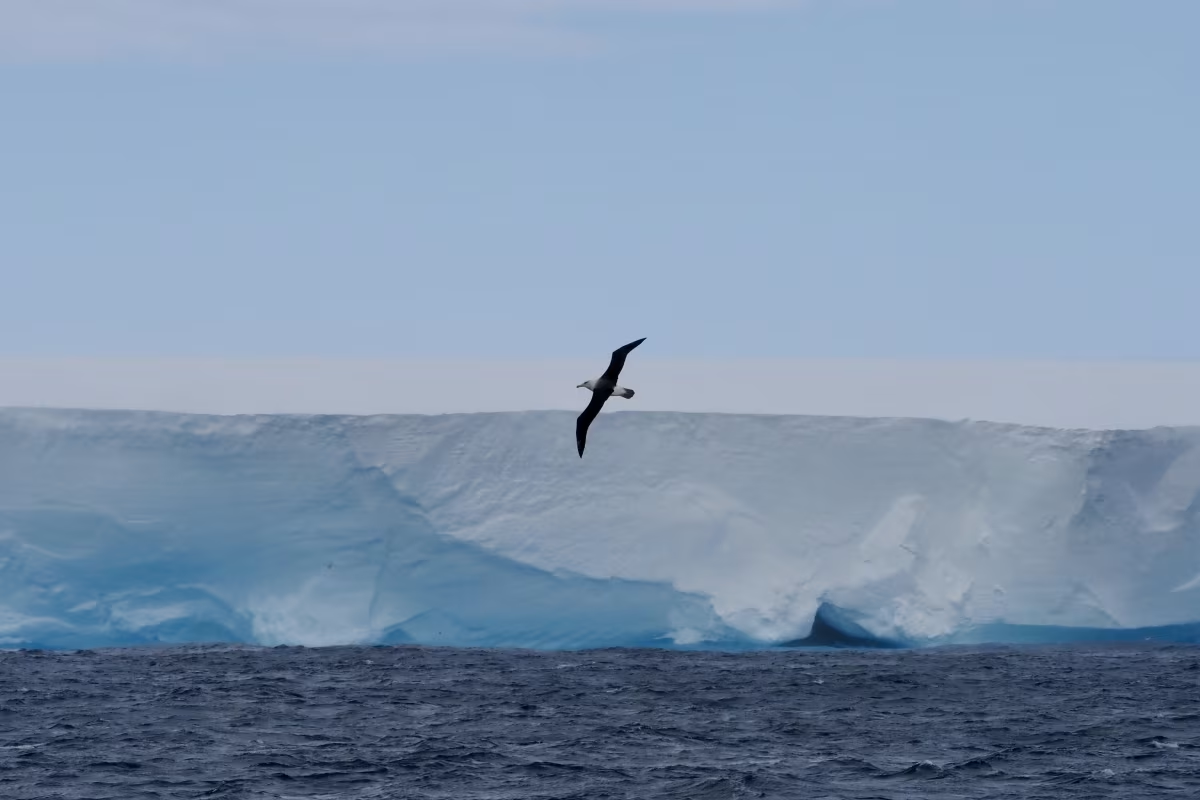
Picture by Meike Sjoer
The impact of iceberg A23a on Antarctica
While the calving of A23a from the Filchner-Ronne Ice Shelf wasn't entirely linked directly to climate change, the increasing frequency of such events and their interaction with warmer waters speaks to a larger pattern of ice instability on many of Antarctica's ice shelves.
As they drift, huge icebergs such as A23a can scrape the seafloor, releasing nutrients into the surrounding water, which may impact local wildlife in both positive and negative ways. Large icebergs can also introduce freshwater in larger volumes into sub-Antarctic ecosystems, which can affect ocean circulation and nutrient mixing.
Debate continues as to whether A23a threatens the wildlife of South Georgia, where it may disrupt and block access to feeding grounds for penguins and seals. Large icebergs such as A23a are closely monitored for insights into the effects of global warming on Antarctica and the impact of such large bergs on Antarctic ecosystems and biodiversity.
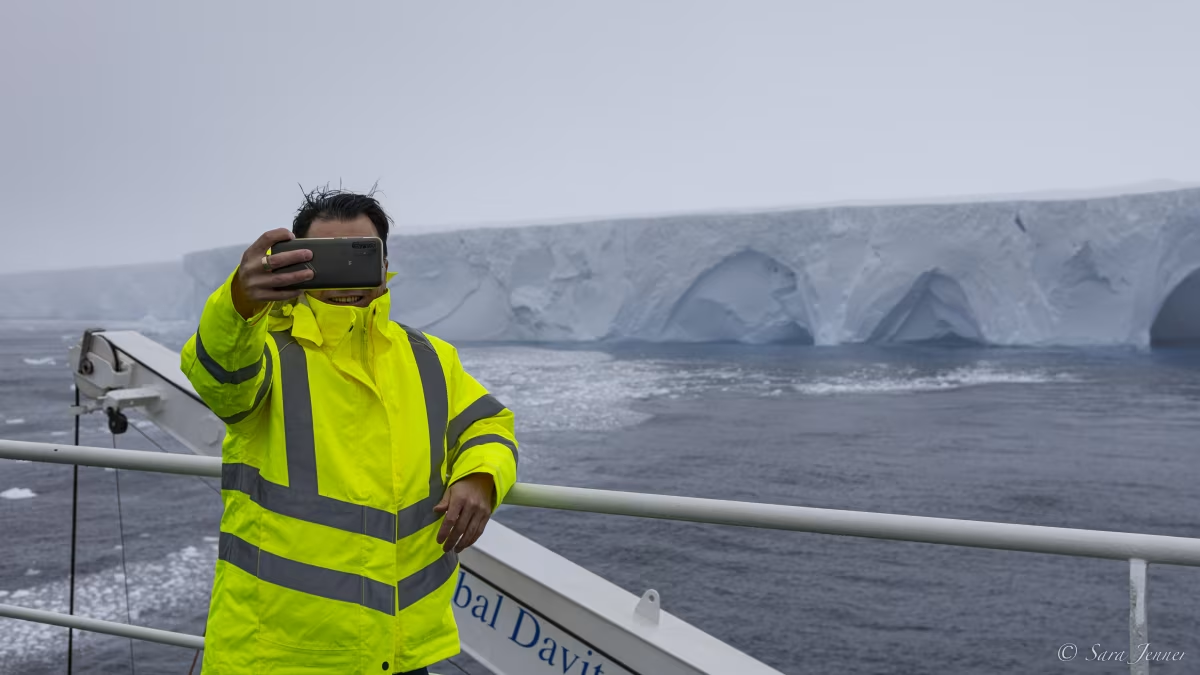
Picture by Sara Jenner
Iceberg A23a facts
- It is the 8th largest iceberg in history - the biggest verified iceberg, B-15, was almost triple the size of A23a!
- When it broke free of the seabed in 2023, iceberg A23a was as big as the U.S. state of Rhode Island and twice the size of Greater London.
- The iceberg weighs as much as one trillion tons!
- A23a spent nearly 40 years trapped on the sea floor in the Weddell Sea.
- In 1956, an iceberg was reported by USS Glacier to be 333 kilometers long and 100 kilometers wide, making this the largest in history. But, its actual size is debated.
Get up close and personal with icebergs in Antarctica
Not all icebergs are as enormous as A23a, with a wide variety of types that you can expect to see on an expedition cruise to Antarctica. Small chunks of ice are known as growlers and bergy bits, with larger, more imposing icebergs ranging on a scale, categorizing them from small to very large.
They're typically classified as either tabular or non-tabular, with tabular icebergs being steep-sided and flat on top. Non-tabular icebergs are further categorized as dome, pinnacle, wedge, dry-dock, or blocky.
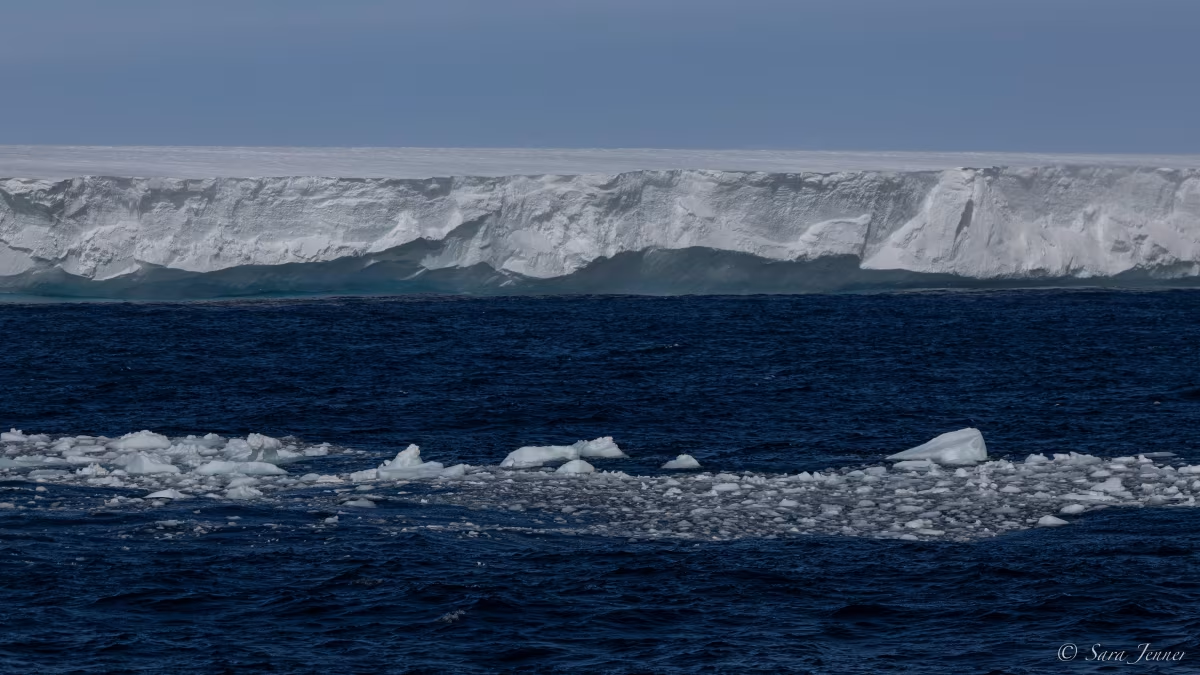
Picture by Sara Jenner
Whatever type of iceberg you encounter - and you will discover many - witnessing the forces of ice, ocean, and time in action is a humbling experience — one that reminds us how interconnected and liable to change our planet is, from pole to pole.
As iceberg A23a continues its slow drift into the open sea, it leaves behind not just an icy trail, but a legacy tied to the ancient processes of our natural world and the changes wrought on our planet by the slow march of time and the impact of industrial acceleration.
Main image by Sara Jenner
